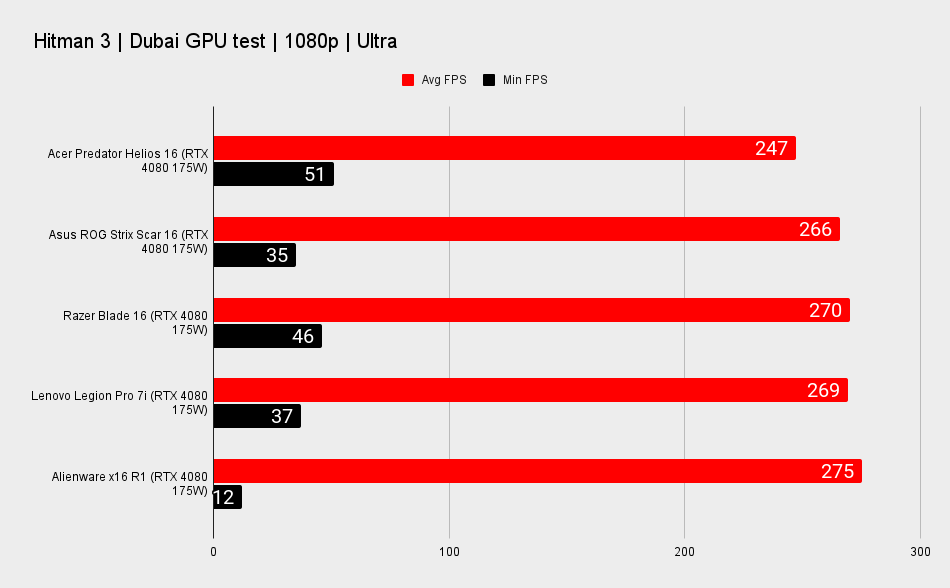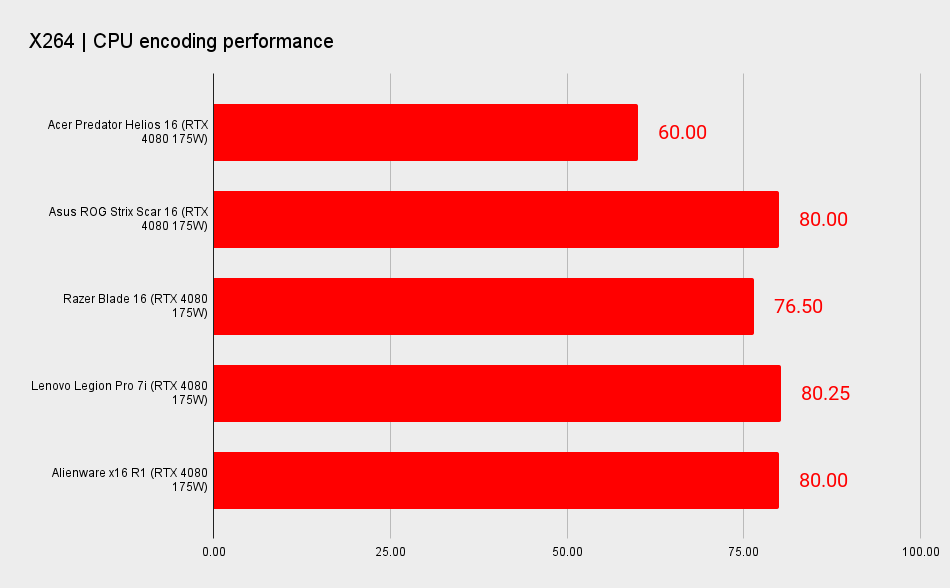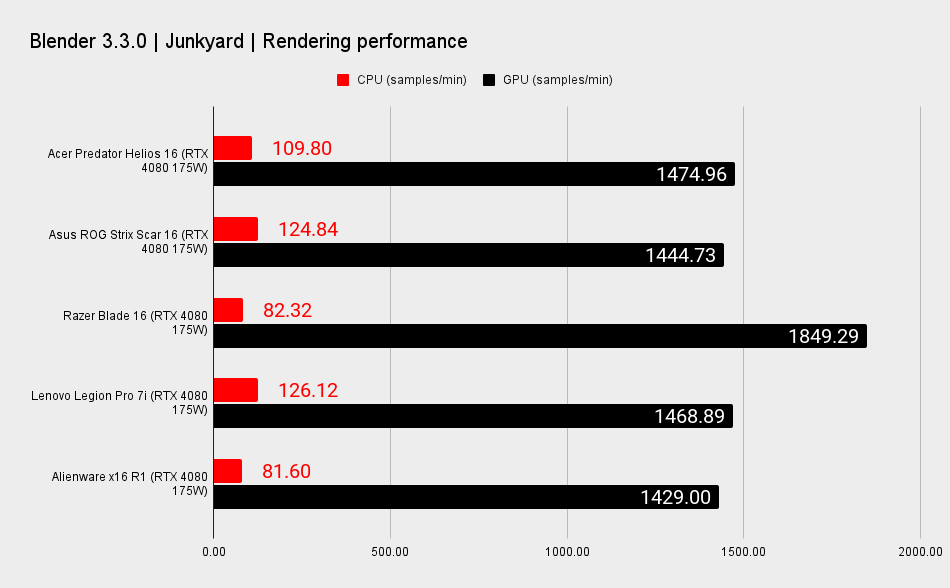Our Verdict
If you're looking for pure performance, look elsewhere. If you're after an actually affordable laptop, this isn't it either. But with around $2,300 or £2,600 to spend, this is an all-round excellent package with a fantastic Mini LED screen worth staring at.
For
- Mini LED screen
- Smart-looking chassis
- Reasonable price
Against
- Sometimes off the pace for performance
- Turbo mode is monstrously loud
PC Gamer's got your back
The Acer Predator Helios 16 isn't the fastest gaming laptop with an Nvidia GeForce RTX 4080 stuffed inside it, but it does have many redeeming qualities. You should absolutely look elsewhere if you want pure performance, but for the raw quality of the Mini LED screen on this laptop and its comparatively affordable price tag, there's something to really like here.
The Helios 16 is a 16-inch laptop, which means it joins the likes of the Alienware X16, Asus ROG Strix Scar 16, Asus Zephyrus M16, Lenovo Legion Pro 7i, and Razer Blade 16 we've already reviewed with similarly high-end specs. Like those laptops, the Helios' 16-inch frame makes it a better blend of screen space and chassis size than most 17-inch devices, and there's only a thin bezel beyond the screen on this laptop; it's otherwise kept pretty tight to that 16-inch frame.
Let's talk about the screen, then. It's one of the Helios 16's strongest features. It's a Mini LED panel with 1000 zones, and those zones are delivered by miniature LEDs packed together behind the screen, rather than your more traditional diodes. The extra zones aim to produce brighter peaks without washing out the darker areas of a picture. Admittedly, Mini LED is no microLED, but over a traditional LED screen I'll take it any day.
The screen on the Helios 16 looks lush. The colours are rich, vibrant, and it doesn't struggle to deliver a punchy image like some cheaper laptops. Crank the brightness right the way up and the image is super impressive, both on the desktop and in games.
I've been playing some Metro Exodus Enhanced Edition and this display is so, so good at showing off areas with bright flames erupting out of the darkness, or rays of light breaking through windows or a hole in the roof.
This laptop's Mini LED screen really is a highlight—an enviable 240Hz and 16:10 (2560 x 1600) design.
But does it make up for the performance deficit I'm sometimes seeing? That's tough, because the Helios can hold its own simply due to its overpowered components. The RTX 4080 and Intel Core i9 13900HX are a mighty combo, but game performance is a bit of a mixed bag versus other gaming laptops with similar spec sheets.
In some games, performance can exceed laptops like Alienware's X16, which isn't the best performer anyways, but the Helios 16 can sometimes fall quite a bit short of a laptop like the Strix Scar 16. The Scar does offer a beefier CPU, which should explain the bump in performance, but if you're really chasing raw performance you can rule this Predator laptop out entirely. Though with an RTX 4080 you're never that short of frames.


Despite running its RTX 4080 at 175W, the same as pretty much every other RTX 4080 laptop we've tested so far, it's still often the lowest performer benchmarks, if not second-last.
As far as gaming laptops go, and especially a high performance one such as this, the Helios 16 is about as loud as you'd expect. It's audible while gaming, and probably a bit too loud to reasonably run full pelt out in public without some sideways glances your direction, but it's not a cacophony like some. That's true of the eco, balance, and performance modes you will likely be running this laptop in day-to-day, but not turbo mode. This laptop produces a monstrous sound that honestly doesn't bear listening to when its turbo mode is engaged.

The overall chassis construction is a sleek black design. It's a little plasticky, but it can be forgiven for a generally pretty smart look. It falls a little short of the Razer Blade 16's professional-looking shell, and it's not quite as flashy as the Strix Scar 16, but with plenty of ports my first impression out of the box was certainly a good one.
Though my first impression of booting this thing highlighted a feature I admittedly absolutely loathe: the extremely loud wooshing, clanging sword sound that plays when you boot this machine. Ugh, why. A tacky touch on a gaming laptop that's going to cost you a couple grand.




















✅ You value a gorgeous screen: The Acer Predator's Mini LED screen is stunning. This new panel technology really works wonders on a smaller laptop screen.
✅ You want a large laptop: The 16-inch form factor is a fantastic mix of screen and size.
❌ You need top performance: This isn't the fastest RTX 4080 laptop we've tested, though it's not too far off the pace.
❌ You need a portable laptop: While this 16-inch laptop is fairly compact considering its screen size, it's still very large, heavy, and comes with a huge power brick.
And the power brick isn't my favourite either. It's pretty massive, weighs a lot, and I wouldn't want to lug it around in my backpack all day alongside this already 2.9kg machine.
Every RTX 4080 gaming laptop is an expensive laptop, but this one will set you back around £2,799 in the UK, though it's currently down to £2,599. For a US equivalent model, I've spotted one going for around $2,300, and the Acer website seems to suggest that's the price you'll be expected to pay for this laptop.
That's actually not a bad price for this sort of spec. You could pay around $2,900 nowadays for the Asus ROG Strix Scar 16 and come away with definite benefits but an undoubtedly similar laptop at its core. Or you could spend as much as $2,949 on the Alienware X16, which again has some benefits but ends up trading blows down the bottom of the stack next to this cheaper Helios 16. It's Lenovo's Legion Pro 7i that offers the sternest competition, going for a similar if not lower price to the Helios 16 and our pick for the best gaming laptop in 2023, though it is without the gorgeous Mini LED panel.
For the money, it's much easier to look past the performance of the Helios and instead at the larger package. The silicon is there, the quality is there, and the screen is 100% there.
If you're looking for pure performance, look elsewhere. If you're after an actually affordable laptop, this isn't it either. But with around $2,300 or £2,600 to spend, this is an all-round excellent package with a fantastic Mini LED screen worth staring at.

Jacob earned his first byline writing for his own tech blog. From there, he graduated to professionally breaking things as hardware writer at PCGamesN, and would go on to run the team as hardware editor. He joined PC Gamer's top staff as senior hardware editor before becoming managing editor of the hardware team, and you'll now find him reporting on the latest developments in the technology and gaming industries and testing the newest PC components.



